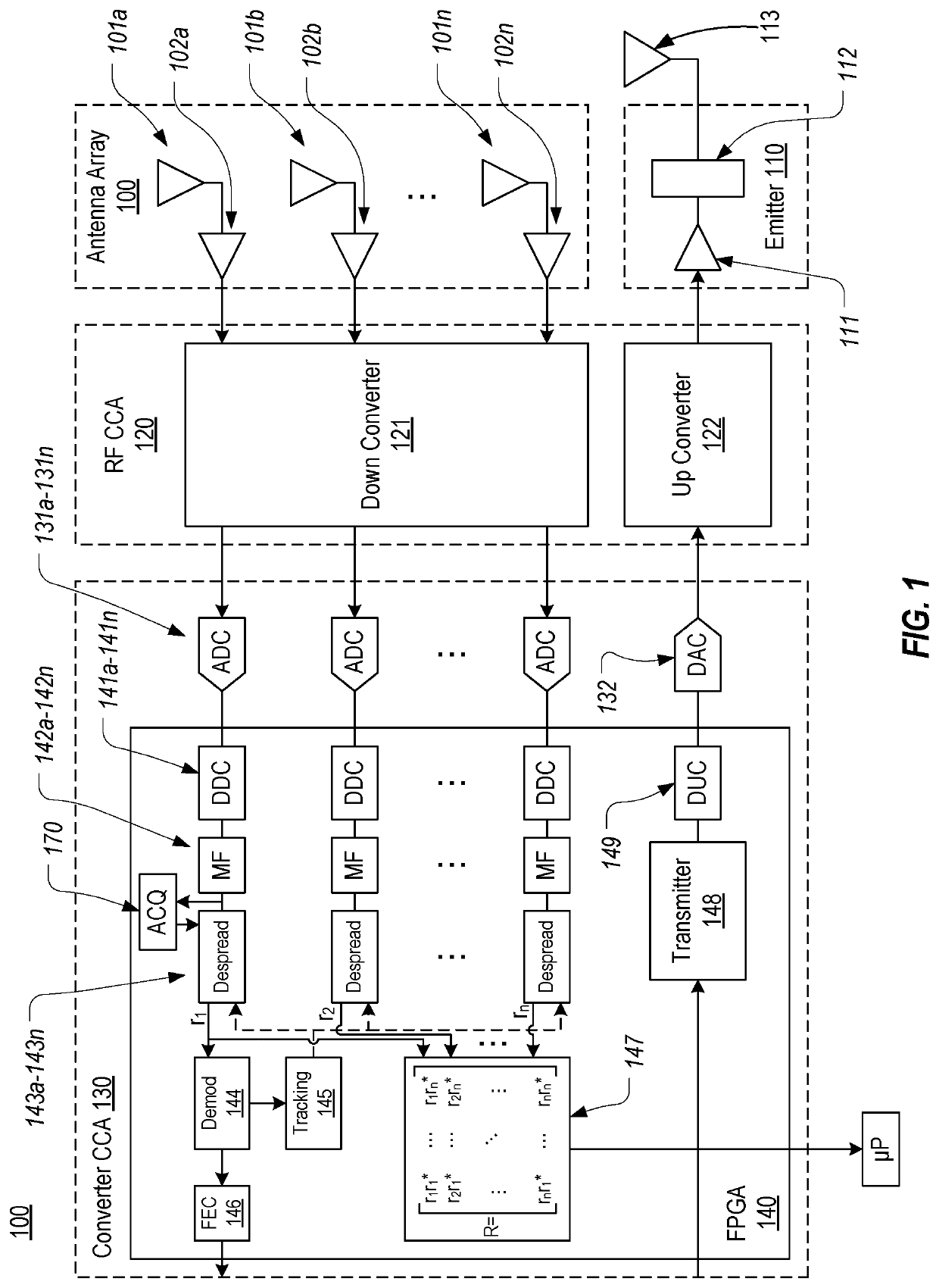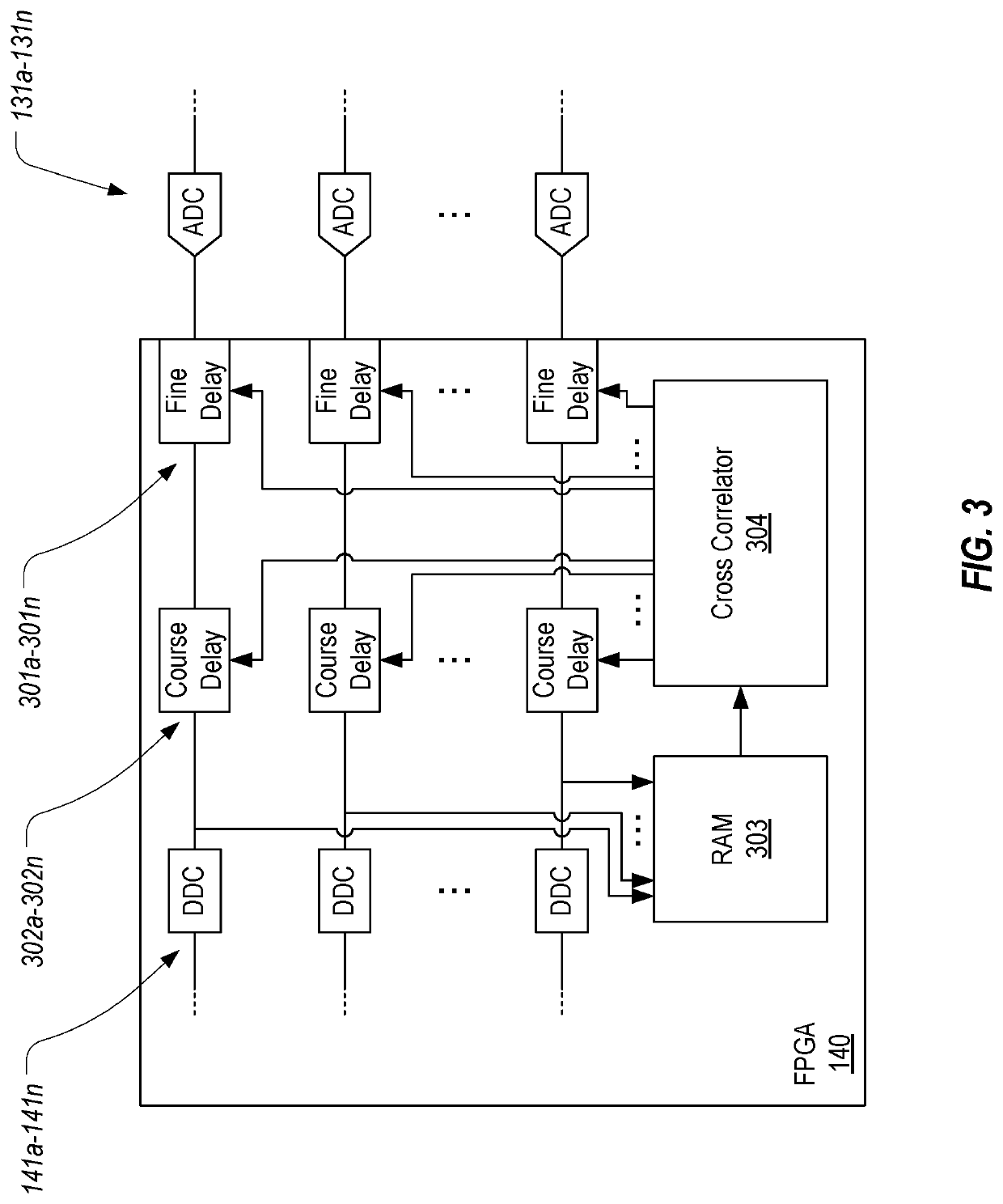Efficiently measuring phase differences in an angle of arrival system
a technology of phase difference and angle of arrival, applied in direction finders using radio waves, multi-channel direction-finding systems using radio waves, instruments, etc., can solve the problems of reducing the overall accuracy of the angle of arrival measurement, implementing a full receiver for each antenna, and significantly increasing the complexity of the system. to achieve the effect of efficient measurement of phase differences
- Summary
- Abstract
- Description
- Claims
- Application Information
AI Technical Summary
Benefits of technology
Problems solved by technology
Method used
Image
Examples
Embodiment Construction
[0016]In this specification, the term “master receiver” or “full receiver” will be used to refer to a receiver that includes components for despreading and demodulating a signal. In contrast, the term “slave receiver” will be used to refer to a receiver that includes components for despreading a signal, but does not include (or does not employ) components for demodulating the signal. An angle of arrival system configured in accordance with embodiments of the present invention includes a master receiver and multiple slave receivers.
[0017]FIG. 1 generally illustrates the architecture of an angle of arrival system 100 that is configured in accordance with embodiments of the present invention. Angle of arrival system 100 includes the following general components: an antenna array 100, an emitter 110, a radio frequency (RF) circuit card assembly (CCA) 120, and a converter CCA 130. Each of these components is represented in dashed lines to indicate that the components may be incorporated ...
PUM
 Login to view more
Login to view more Abstract
Description
Claims
Application Information
 Login to view more
Login to view more - R&D Engineer
- R&D Manager
- IP Professional
- Industry Leading Data Capabilities
- Powerful AI technology
- Patent DNA Extraction
Browse by: Latest US Patents, China's latest patents, Technical Efficacy Thesaurus, Application Domain, Technology Topic.
© 2024 PatSnap. All rights reserved.Legal|Privacy policy|Modern Slavery Act Transparency Statement|Sitemap



